Turned off washing machine hums
 Sometimes users, having heard an incomprehensible noise, are surprised to discover that it is the humming of a switched off washing machine. Objectively, de-energized equipment cannot make any sounds, at least those of its components and elements that operate on electricity. What causes the hum?
Sometimes users, having heard an incomprehensible noise, are surprised to discover that it is the humming of a switched off washing machine. Objectively, de-energized equipment cannot make any sounds, at least those of its components and elements that operate on electricity. What causes the hum?
The SMA intake solenoid valve may be noisy. What to do in such a situation, how to fix the breakdown? Let's look into the nuances.
We make sure that the intake valve is to blame
When the washing machine is turned off, the first thing you need to pay attention to is the inlet valve. If it is open, then water can flow even into a de-energized washing machine. It is not difficult to make sure that the machine makes sounds precisely for this reason.
Turn off the water supply to the machine using the shut-off valve installed in front of the washer's inlet hose.
When a shut-off valve is not provided, shut off the cold water supply at the entrance to the apartment. The pressure in the system will disappear, liquid will not flow into the machine, and the equipment will stop humming. If the noise really stops, then the problem is definitely in the solenoid valve.
You also need to listen to see if there are any other extraneous noises, for example, the sound of water draining. When the inlet valve is open, the tank of the machine will gradually fill, and the excess will flow into the sewer by gravity.
Remove the valve and get ready to check it
How to diagnose a solenoid valve? First, turn off the power to the automatic machine and move it to the middle of the room so that you have free access to all sides of the body. Next, you need to drain the remaining water from the system.To do this, you will have to unscrew the garbage filter - it is located in the lower corner of the washing machine, behind the false panel or technical hatch.
Before unscrewing the filter, place a basin under the machine to collect water. Next, you can remove the “trash can” from the case. The remaining liquid from the system will drain into the prepared container. Then clean the plastic spiral and put it back in place.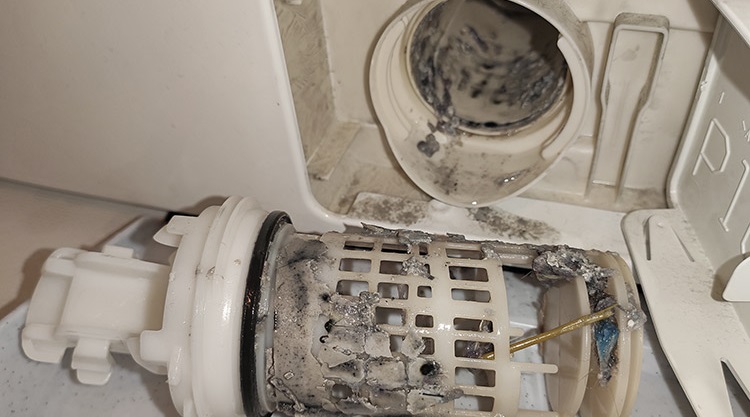
The inlet valve is located under the top cover of the MCA. To remove the panel, you need to unscrew the two screws holding it in place. Afterwards you will need to get the element itself. During the work you will need the following tools:
- a pair of screwdrivers (phillips and slotted);
- pliers;
- pliers with pointed tips;
- multimeter
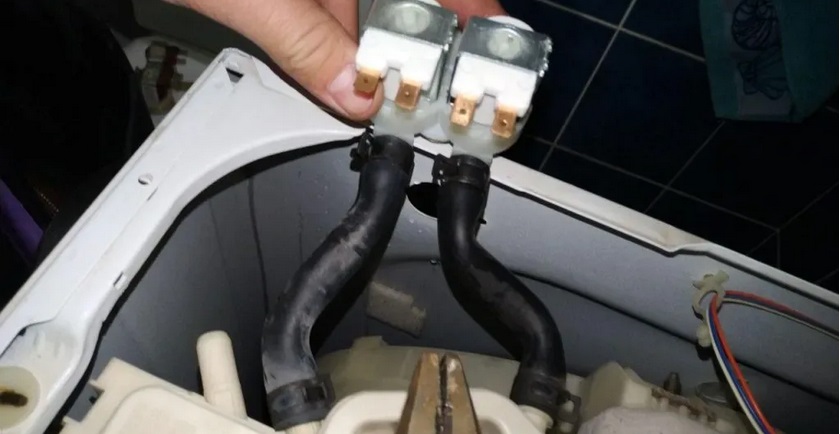
It is not difficult to remove the water supply valve from the machine. To do this, just disconnect the supply wiring and pipes from it (after loosening the clamps) and unscrew the fixing bolts. After this, the part is removed from the washer.
What breaks in the intake valve?
The solenoid valve may stop functioning normally for various reasons. Why exactly the machine is malfunctioning will have to be found out during diagnostics. Let's talk about the most common problems.
- Filter element clogged. Immediately after the inlet hose, in front of the inlet valve, there is a mesh whose task is to retain impurities contained in tap water. The filter becomes clogged and the fluid begins to pass through worse. To solve the problem, just clean the mesh.
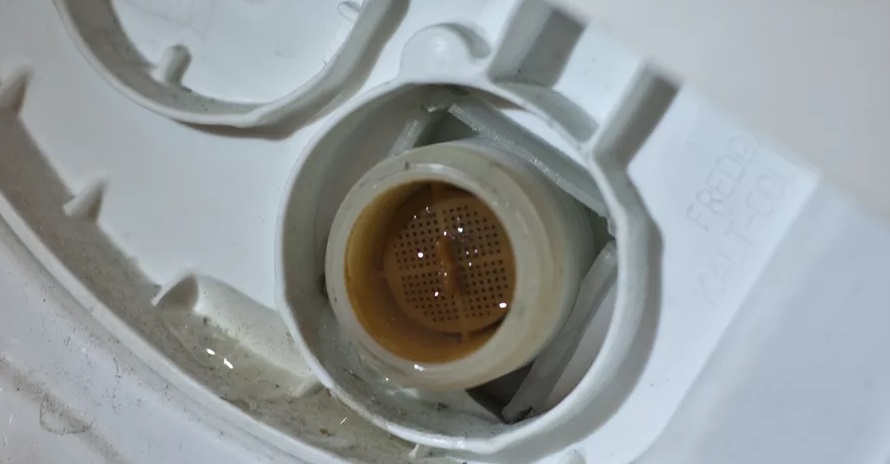
- Dirt adhering to the valve diaphragm. The elastic band should move freely up and down when drawing water into the machine. When it becomes covered with dirt, it no longer fits tightly to the “seat”, because of this the valve does not function correctly.You will need to disassemble the intake unit to see the gasket. If there are cracks, the seal will have to be replaced; plaque and rust will only need to be cleaned off.
- Problems with the spring. Over time, the operation of the valve mechanism may be disrupted - the rod will stop “moving” up and down. A broken or deformed spring will have to be replaced.
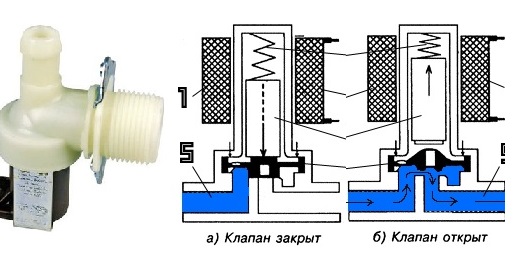
- Cracks in the valve body. The “packaging” of the device is plastic, so it may well be damaged. If there are cracks in the “shell”, water will flow inside the washer, getting onto other components. For this reason, the automatic machine may begin to electrocute, and this can lead to a short circuit. To solve the problem, you will have to replace the intake element.
Often the solenoid valve body cracks in SMAs installed in unheated rooms. When the air temperature is below zero, the input freezes, expands and bursts the “shell” of the device. In addition, the rubber membrane after such “freezing” loses its properties. Therefore, if, after spending the winter at the dacha, the washing machine begins to leak, replace the inlet valve.
After removing the inlet from the washing machine body, inspect it carefully. If the magnetic coils are deformed, the water supply valve will have to be replaced; in this case, it cannot be repaired. We'll tell you how to diagnose a part.
Is the valve coil intact?
The performance of the solenoid valve mainly depends on the condition of the coil. It is this that “launches” the rod, ensuring that water is drawn into the washing machine. You can check it in two ways.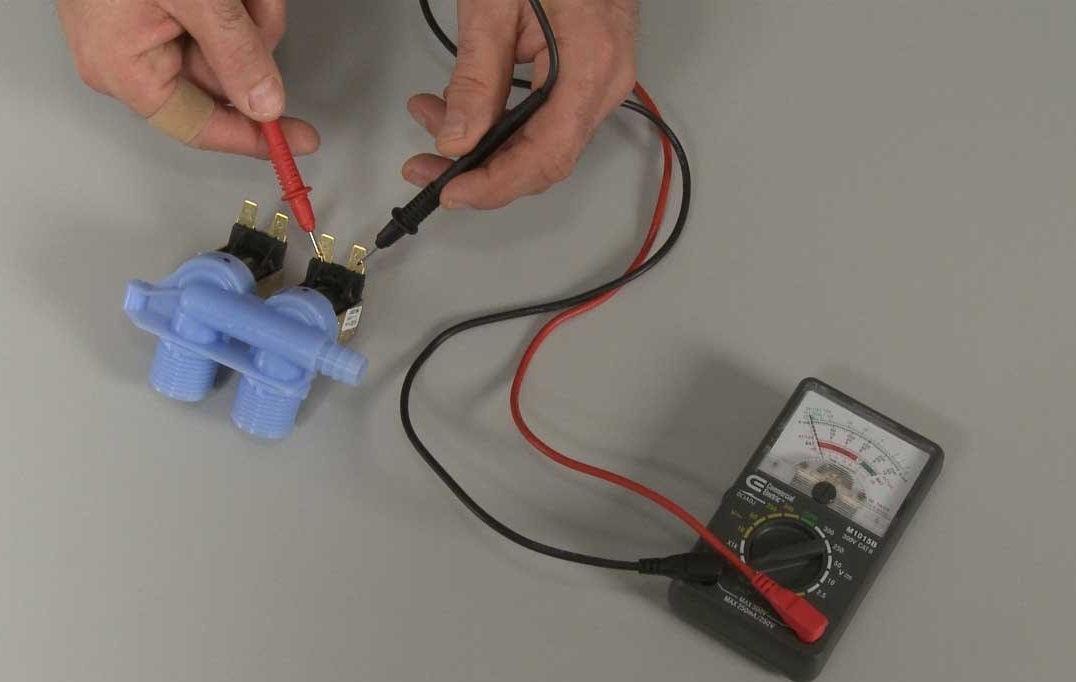
The easiest way to check the magnetic coil is with a multimeter. The device must be switched to resistance determination mode. Next, the tester probes are applied to the coil contacts.
If the intake valve is working properly, the multimeter will display a resistance in the range of 2000-4000 Ohms.
Electromagnetic valves of automatic machines can also be of double or triple type. Then the multimeter rings each coil individually. Resistance should be within normal limits.
Another, more complex method is to supply 220 Volts to the coil. Under this voltage, a magnetic field should form and pull the rod up (you will hear a characteristic click). When the current is turned off, the part will snap into place. Testing the device in this way must be done with great care. Experts still recommend using a multimeter.
Let's try to fix the valve
Usually the inlet can be repaired. The valve is quite easy to disassemble - even a “newbie” can cope with this task. In extreme cases, even if the work is not successful, the part can be replaced entirely - its cost is low.
To disassemble the water supply valve, you need:
- use a thin screwdriver to pry up the coil and remove it;
- Use pliers to remove the rods. If the hardware does not give in, treat it with special lubricant WD-40 and try again after 15 minutes;
- pull out the metal rod with the elastic membrane and spring.

What to do next? After disassembling the valve, inspect each component for damage. If the parts are simply dirty, clean them and put them back.
If you find that the spring, membrane or other part of the inlet device is deformed, replace it with a new one. You can order similar parts on the Internet or search in specialized stores in your city.
If the breakdown is beyond repair, you will have to install a new solenoid valve. For example, in the event of a coil failure.The cost of an inlet device on average ranges from $10 to $25, depending on the model of the washing machine.
Interesting:
Reader comments
- Share your opinion - leave a comment


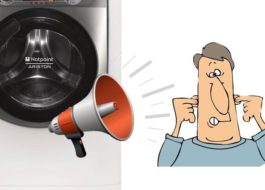

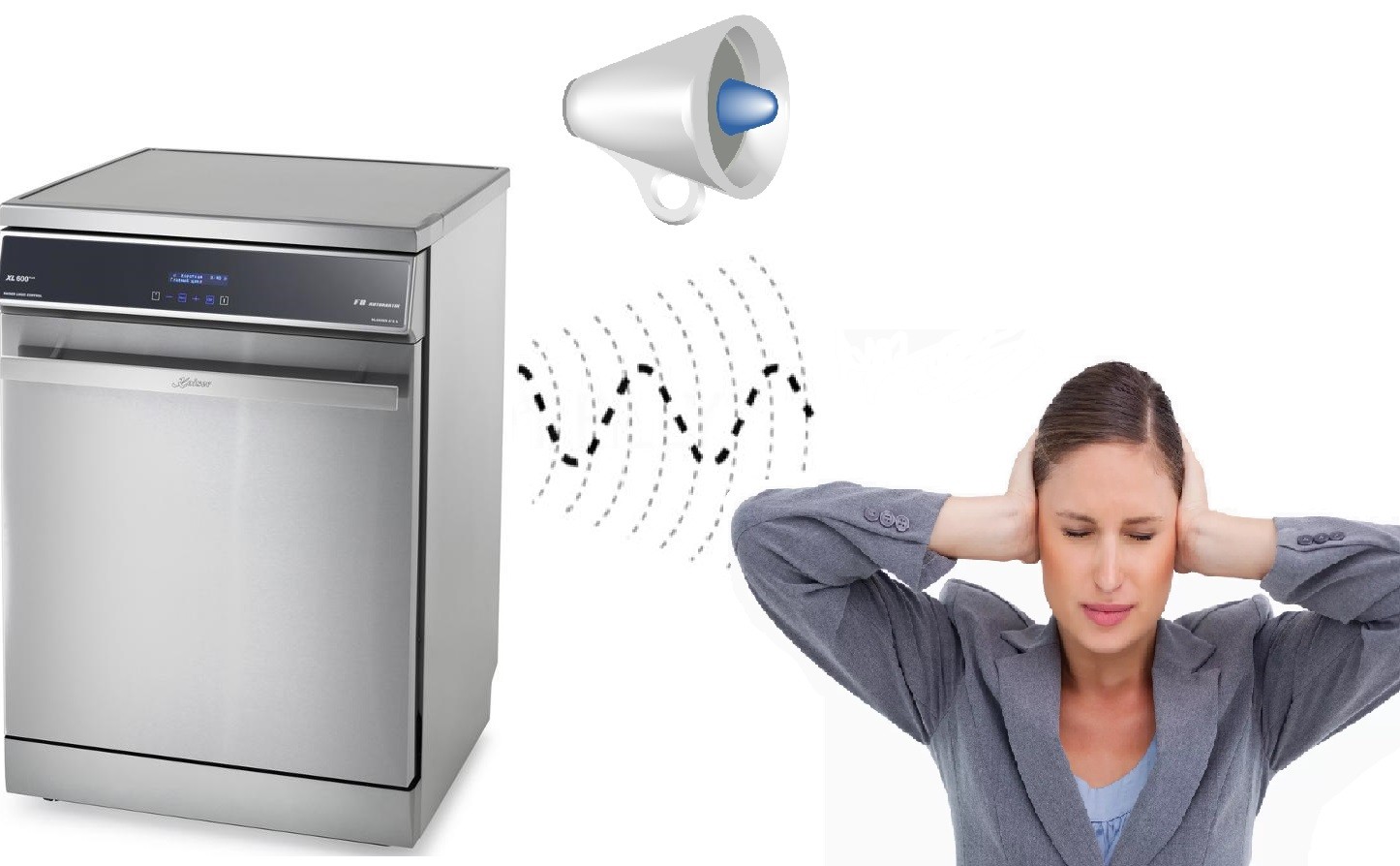
















Add a comment